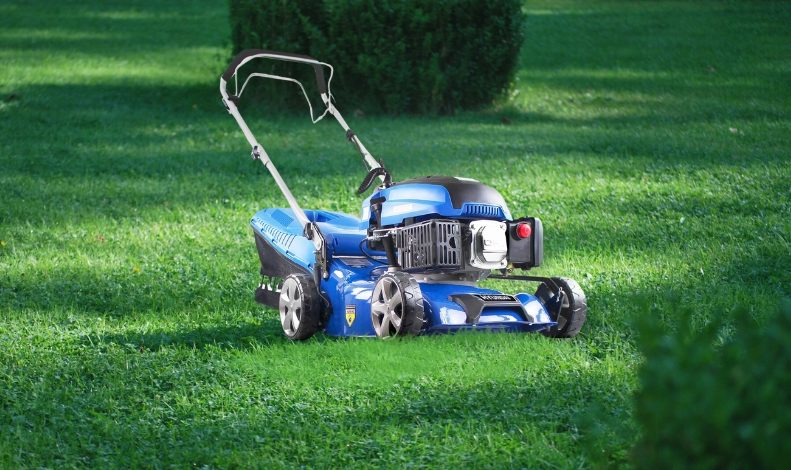
For many homeowners, a lush, well-maintained lawn is the crown jewel of the garden. Whether it’s a modest patch of green or a sprawling expanse, keeping your lawn in good shape requires more than enthusiasm—it calls for the right equipment. Among the many choices available, petrol lawnmowers stand out for their raw power, versatility, and ability to manage tough conditions. But not all petrol mowers are the same. Understanding the key features to consider when buying one can make all the difference in both performance and satisfaction.
One of the first things to evaluate is cutting width, which refers to the width of the path the mower will cut in a single pass. Petrol mowers come in a variety of deck sizes, ranging typically from 40cm to over 55cm. A wider cutting width means you can mow your lawn faster, as fewer passes are needed. This is especially beneficial for large gardens or open spaces. However, for smaller lawns, narrow paths, or intricate layouts with many obstacles, a narrower mower offers better manoeuvrability and precision. The right balance between width and agility depends on your specific lawn size and layout.
Closely related to cutting width is cutting height adjustment. This feature allows you to set how high or low the mower trims the grass. Most modern petrol lawnmowers offer several height settings, typically between 20mm and 80mm, controlled by a lever or dial. This adjustability is crucial not only for aesthetic reasons but also for lawn health. Cutting too short can stress the grass, especially during dry weather, while letting it grow too long may result in an uneven appearance or encourage moss and weeds. With multiple cutting heights, you can adapt to seasonal changes and grass types, helping you maintain a well-balanced and healthy lawn all year round.
Another significant consideration is the starting mechanism. Traditional petrol lawnmowers use a recoil start system, where you pull a cord to turn the engine over. While this remains a dependable method, it can be physically demanding for some users, especially older gardeners or those with limited strength. In response, many modern models now come with electric start buttons, which use a small battery to fire up the engine with minimal effort. This advancement makes starting your mower more convenient and less frustrating, particularly if you mow frequently or deal with cold starts. When evaluating a model, it’s worth testing both options to see which suits you best.
Engine power and size also play a role in overall performance. Measured in cubic centimetres (cc), engine size typically ranges from 125cc for compact models to 200cc and beyond for more robust machines. More powerful engines are better suited to large lawns or thick, wet grass, as they provide extra torque to keep the blade spinning efficiently. However, they are usually heavier and may consume more fuel. If your lawn is medium-sized and relatively even, a mid-range engine will likely deliver the best balance of performance and fuel economy.
Once the grass is cut, what happens to the clippings becomes the next point of consideration. Petrol lawnmowers usually offer one or more grass disposal methods: collection, mulching, or side discharge. A collection box or bag is ideal for a tidy finish, capturing the clippings for easy disposal or composting. Capacities range from 40 to over 70 litres, and the larger the collection box, the less often you’ll need to stop to empty it. That said, large boxes also add weight and bulk to the mower.
Alternatively, some mowers come with a mulching plug, which chops the clippings into fine particles and returns them to the lawn as natural fertiliser. This method promotes grass health, reduces the need for chemical feed, and eliminates the task of emptying the collector. It’s best used during dry conditions when clippings break down easily. The third option, side discharge, ejects clippings to the side of the mower. While this doesn’t leave a clean finish, it’s useful for quickly mowing long or rough grass where tidiness is not a priority.
Wheel size and design are often overlooked, but they influence both comfort and control. Larger rear wheels provide better traction and make it easier to navigate over uneven or sloped terrain. Some models include ball bearings or treaded tyres for smoother movement and enhanced durability. If your garden includes inclines or rough patches, choosing a mower with ergonomic wheels can reduce strain and improve the mowing experience.
For those who appreciate extra convenience, look for features such as foldable handles and wash ports. Foldable handles make storage more efficient, especially in tight garden sheds or garages, while integrated hose connectors (wash ports) make it simple to clean the underside of the mower deck. Grass buildup beneath the blade can affect performance and accelerate wear, so easy cleaning is a valuable bonus.
Another feature to consider is whether the mower is push or self-propelled. Push mowers rely entirely on user effort to move forward, which is fine for small, flat lawns. Self-propelled mowers use the engine to drive the wheels, reducing effort and making it easier to cover larger areas or hills. Some self-propelled models offer variable speed control, allowing you to match the mower’s pace to your own walking speed—ideal for comfort and efficiency.
Don’t forget to assess build quality. A mower with a steel cutting deck will generally be more durable than one with a plastic chassis. Check for robust handles, secure levers, and a solid engine mount. It’s worth investing a little more in a well-constructed mower that will deliver years of reliable service rather than replacing a cheaper, flimsier unit after just a few seasons.
Brand reputation and after-sales support are important too. Dealers like Ron Smith have built their reputations on offering high-quality machines supported by expert advice and reliable servicing. Whether you’re buying your first petrol mower or upgrading an existing one, choosing a trusted supplier ensures you get the right product with ongoing support.
In conclusion, buying a petrol lawnmower isn’t just about picking the most powerful or the cheapest model—it’s about finding the features that align with your garden’s needs and your personal preferences. Consider how wide and tall you want to cut, how easy it is to start, what happens to the clippings, and whether your lawn terrain demands extra traction or propulsion. By carefully evaluating these key features, you can invest in a mower that makes lawn care faster, easier, and more enjoyable.




